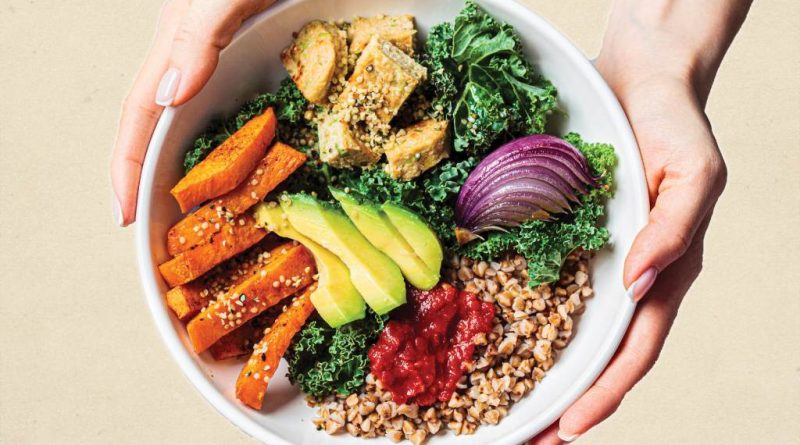What Is the DASH Diet? The American Heart Association Named It the Best for Heart Health

Diets can be hard to follow. It’s one reason many diets fail and people regain the weight they initially lost. But as you age, what you eat can have a real impact on your health, especially as your risk increases for conditions such as high blood pressure and heart disease.
The American Heart Association recently reviewed medical data to figure out the most heart-healthy food plan. And despite some top contenders like the Mediterranean and vegan diets, their vote went to the Dietary Approaches to Stop Hypertension (DASH) diet.
The DASH diet is a flexible eating plan created by the National Heart, Lung, and Blood Institute. Unlike other meal plans, there are no dietary restrictions on what you can or can’t eat. Instead, the plan provides recommendations to shape your daily and weekly nutritional goals.
“The DASH diet is one of the few heart healthy diets studied throughout the years,” says Dr. Cheng-Han Chen, an interventional cardiologist and medical director of the Structural Heart Program at MemorialCare Saddleback Medical Center in California. “It does a great job at lowering blood pressure and that’s an important risk factor of heart disease we want to take care of and improve.”
While everyone’s eating plan will look a little bit different, the diet focuses on a few key general themes. The DASH eating plan involves eating vegetables, fruits, and whole grains such as whole-wheat bread. All of the above are high in fiber, which can make you feel fuller faster. Moreover, the plan also encourages people to choose fat-free or low-fat dairy options such as beans, fish, nuts, and lean meats like chicken breast.
The DASH diet also encourages you to limit your consumption of foods high in alcohol, salt, and saturated fats. These include coconut oil, red meat, whole milk, and cheese. Additionally, people on the DASH diet should reduce the amount of soda and other sweets they consume.
Based on a 2,000 calorie diet, the daily servings for the DASH eating plan includes:
- 6 to 8 servings of grains
- 4 to 5 servings of vegetables
- 4 to 5 servings of fruits
- 2 to 3 servings of fat free dairy
- 4 to 5 servings of nuts and seeds
- 6 or less servings of lean meats, chicken, and fish
- 2 to 3 servings of fats and oils
- 5 servings or less of sweets per week
- Less than 2,300 mg of salt
While it’s possible to shed pounds because of healthier eating habits, keep in mind that the DASH diet is not a weight loss meal plan. It was designed to lower blood pressure and cholesterol by removing empty carbs and replacing them with protein and “good” fats.
“The easiest way to think about it is not as a diet, but as a healthier way of eating,” explains Dr. Chen. With this reasoning, he says anyone could adopt the DASH diet, but it’s of even more importance for people who are overweight or have high blood pressure.
The American Heart Association rated 10 of the most popular diets intended to help with heart health. The Mediterranean, vegetarian, and pescetarian meal plans adhered to their guidelines on healthy heart eating — eating plenty of fruits and vegetables, limiting sugar and salt, and restricting ultraprocessed foods, to name a few. Meanwhile, the paleo and keto diets actually worsened a person’s heart health.
The DASH diet was the only diet that received a perfect score of 100 with the Mediterranean diet closely following with a score of 89. This is because the Mediterranean diet does allow for a small amount of drinking.
The news of the DASH diet being ranked the top heart-healthy diet isn’t too surprising. Research in recent years has been linking the DASH diet to a lower risk of heart disease and heart failure as one gets older. One study estimated a 10 percent decreased risk of heart disease after following the DASH diet for two months.
Starting any lifestyle change is hard at first, but there are tips you can take to stick to the the DASH diet.
With any diet, you want to start gradually. Making a complete overhaul of your eating habits can cause too much pressure and make you more likely to give up. Instead, try slowly adding more heart-healthy foods day by day like adding another vegetable during lunch or dinner. While every body is different, Dr. Chen says you can start seeing benefits in a couple of weeks of starting the DASH diet. “I’ve had patients tell they just feel better and have more energy in a matter of days.”
To keep yourself from snacking mindlessly, consider using a food diary or app to record your current eating habits. Once you figure out the patterns of when you’re most likely to crave junk food or sweets, you can prepare some fruits and other low-fat snacks to satisfy cravings.
The most important thing is to not give up if you don’t see results immediately. You will eventually notice small changes in your health that Dr. Chen says can act like positive reinforcement to keep going. “Don’t think of it as a quick weight loss diet scheme, but a long-term investment for your health and future.”

Source: Read Full Article

